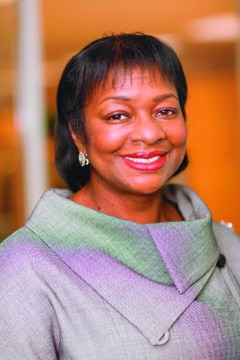Managing Director, Client Relationship Officer & Community Relations Officer ● Barclays Global Investors ● San Francisco ●
 Leona Bridges got her first taste of securities lending when it was still a back-office function for most firms in the late-1980s. She saw a place where she could combine her experience in repo and Fed funds with equities-and the potential for securities lending’s operational function to become an investment function.
Leona Bridges got her first taste of securities lending when it was still a back-office function for most firms in the late-1980s. She saw a place where she could combine her experience in repo and Fed funds with equities-and the potential for securities lending’s operational function to become an investment function.
Bridges started her career in securities lending, after a stint at Crocker Bank working with repo, at Wells Fargo Investment Advisors (now Barclays Global Investors). While other firms were taking a fresh look at the risks entailed in securities lending in the late 1980s, Wells Fargo, as an asset manager, had always viewed securities lending as an investment function, Bridges says. Other firms came around because they re-evaluated the risks involved, especially the reinvestment risk, and securities lending found itself moving to the front office as a recognized investment strategy as well as revenue driver.
Today, securities lending offers important functions for the market as a whole, says Bridges, who is now a managing director at Barclays Global Investors in San Francisco. “I think securities lending is essential for the market in order to maintain liquidity, allow investors to hedge positions and manage risk, promote price discovery, plus it also provides real incremental return for investors. This is why it’s in the best interest of investors to continue to lend, but also to keep in mind the risks involved.” Even though plan sponsors have pulled back from securities lending in the wake of last year’s turmoil, Bridges sees it as an opportunity for innovation in the industry.
“Risk models and analysis became much sharper” after previous market shocks, such as in 1994 and 1998 (after the Russian financial crisis). “We’re already seeing innovation come out of the crisis. The models we had in place in 2007 and 2008 focused on credit and interest-rate risk, but they didn’t adequately account for liquidity, and that was at the center of the crisis,” she says. “So now we’ll see a greater focus on liquidity in the new models.”